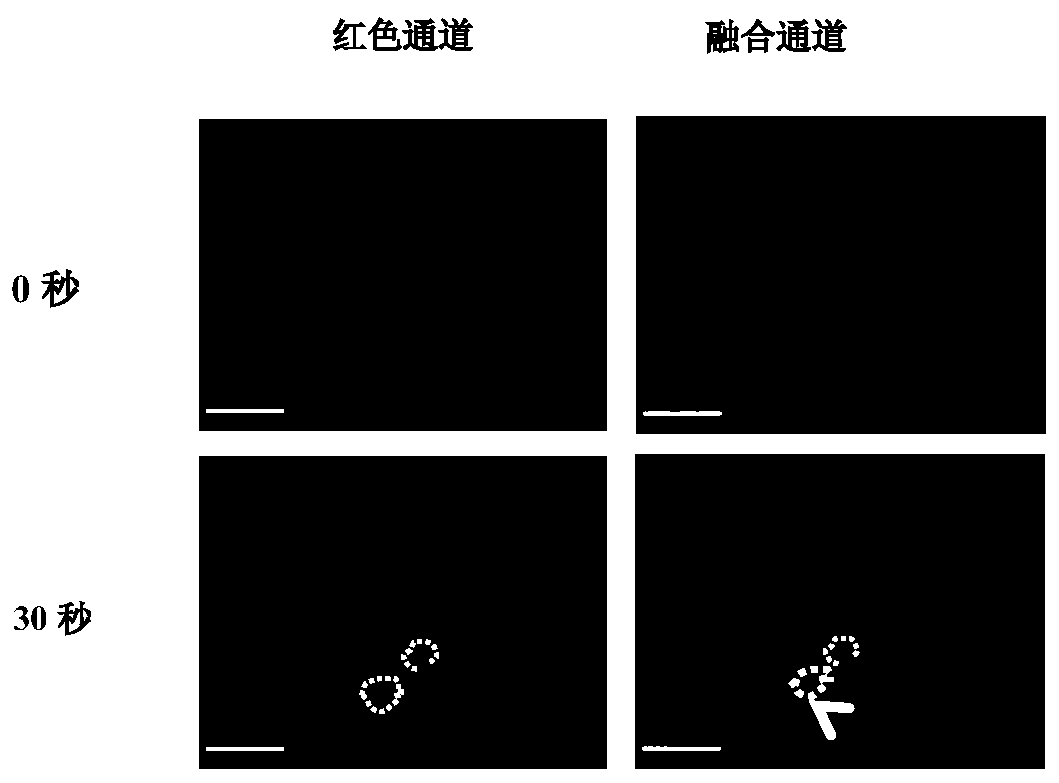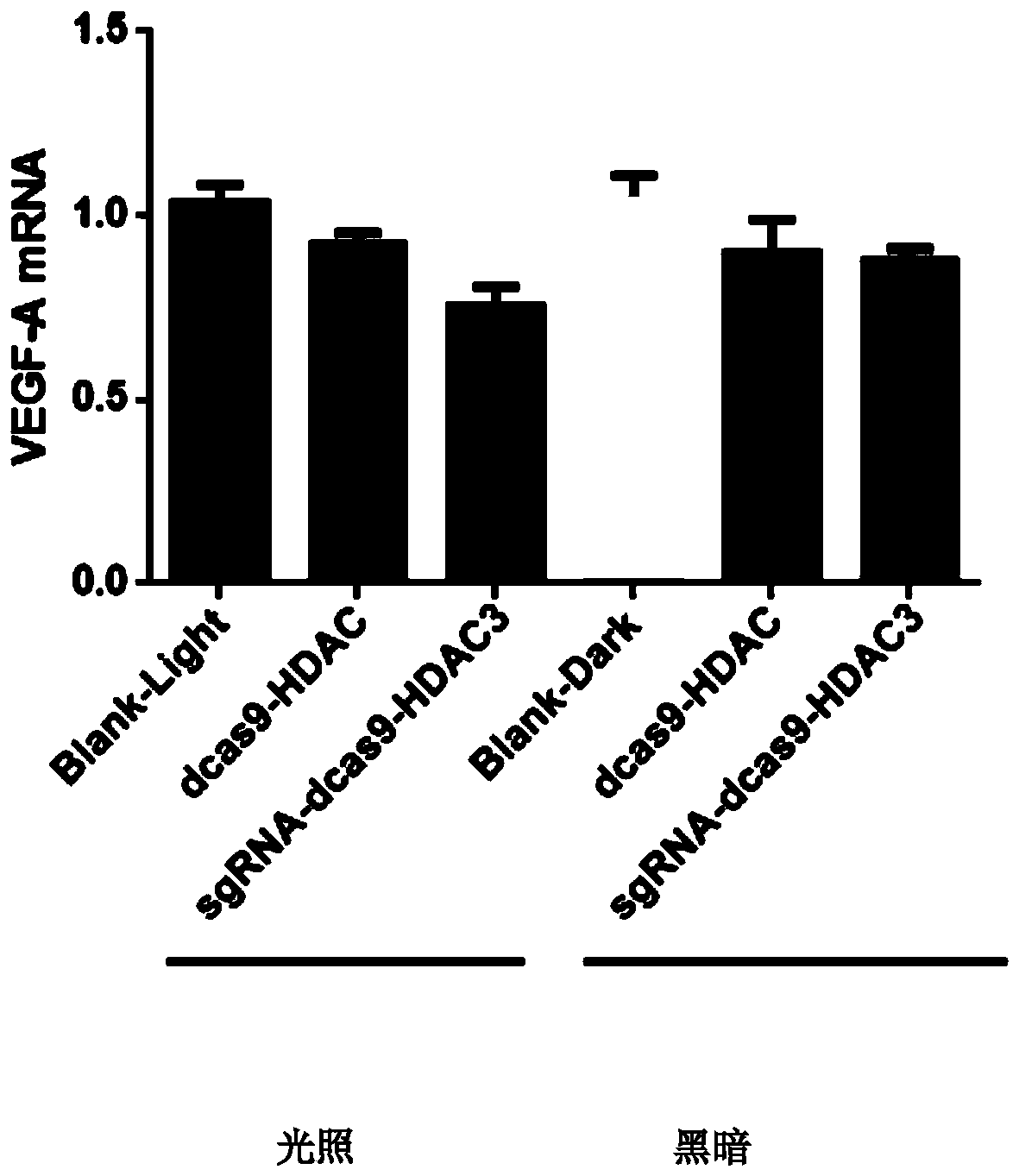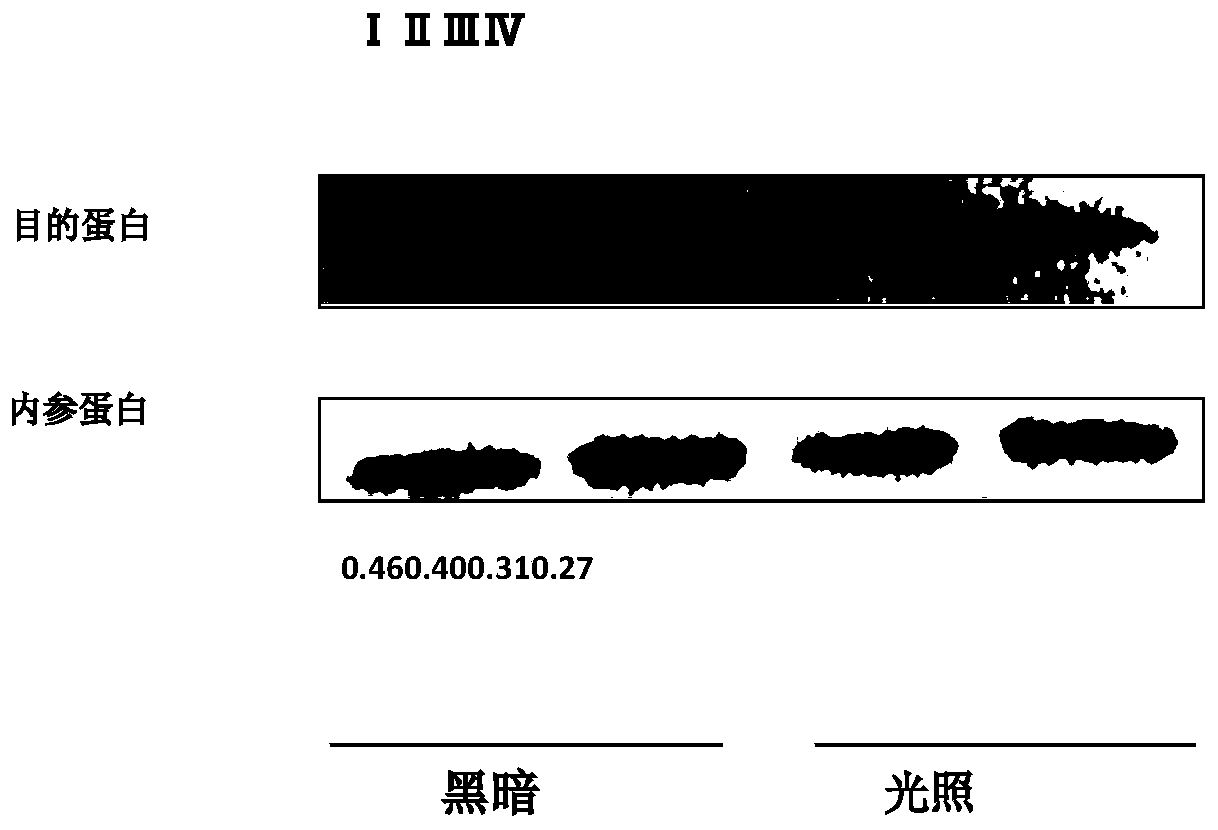Optically controlled gene transcription inhibition system and method, and construction method for optically controlled gene transcription inhibition system
A technology of gene transcription and construction method, which is applied in the field of light-controlled gene transcription inhibition system and inhibition and construction, can solve the problems of affecting the quality of life of patients, heavy economic burden, delaying the best time for the treatment of fundus lesions, etc. sexual effect
- Summary
- Abstract
- Description
- Claims
- Application Information
AI Technical Summary
Problems solved by technology
Method used
Image
Examples
Embodiment 1
[0077] Construction of gene-targeting sgRNA plasmid expression vector: Take the design of guideRNA targeting VEGF factor as an example:
[0078] The sgRNA expression vector construction sequence is SEQ.No.1, as follows:
[0079] gcgctccccaccggcccgtg
[0080] (1) First determine the 20bp VEGF target sequence (the genome sequence should be 20bp+NGG);
[0081] (2) Since the starting base of U6humanpromoter transcription needs to be G, if the first 20bp is G, skip this part; add an additional G before 20bp to form a G+20bp sequence;
[0082] (3) Add caccg before 20bp or G+20bp5' to form cacc-G+20bp sequence, which is Forward sequence (directly synthesized by the company);
[0083] (4) Perform reverse complementation of 20bp or G+20bp, and add aaac before 5', then it is a Reverse sequence (directly synthesized by the company);
[0084] (5) The forward and reverse bases (molar concentration: 100 μM) of the synthesized sgRNA are annealed to make base pairing and form a double-strand...
Embodiment 2
[0090] To verify the efficiency of the interaction between light-regulated proteins cib1 and cry2, take 293T cells as an example:
[0091] Perform cell transfection experiments with cib1-GEP expression plasmids and cry2-mcherry plasmids with fluorescent tags: plant cells in confocal small dishes one day in advance, and culture 1ug of DNA and 2ul of transfection reagent with 50ul of serum-free respectively base dilution. Stand at room temperature for 5 minutes; add the transfection reagent dilution to the DNA dilution, mix well, and let stand at room temperature for 15 minutes; add the transfection complex to the culture container containing cells and complete medium, and incubate for 4-6 hours Afterwards, the medium was replaced, and after 48 hours of culture and expression, the interaction of photoregulated proteins was observed in real time under the action of a 488nm laser using a confocal microscope. Experimental results such as figure 1 As shown, the results show that a...
Embodiment 3
[0093] (1) Perform cell transfection experiments with sgRNA, dCas9-cib1, and cry2-HDAC plasmid expression vectors: plant cells in a 12-well plate one day in advance, and culture 1.2ug of DNA and 4ul of transfection reagent with 25ul of serum-free base dilution. Stand at room temperature for 5 minutes; add the transfection reagent dilution to the DNA dilution, mix well, and let stand at room temperature for 15 minutes; add the transfection complex to the culture container containing cells and complete medium, and incubate for 4-6 hours Afterwards, the medium was replaced, and the cultivation was continued for 24-48h.
[0094] (2) Set up the control group (only transfected with dCas9-cib1, cry2-HDAC plasmid expression vector) and the experimental group (transfected with sgRNA, dCas9-cib1, cry2-HDAC plasmid) to set up the dark group and the light group respectively, and the light group is set at 488nm After 24 hours of light with a frequency of 1 Hz and a power of 0.75 w, qPCR w...
PUM
 Login to View More
Login to View More Abstract
Description
Claims
Application Information
 Login to View More
Login to View More - R&D
- Intellectual Property
- Life Sciences
- Materials
- Tech Scout
- Unparalleled Data Quality
- Higher Quality Content
- 60% Fewer Hallucinations
Browse by: Latest US Patents, China's latest patents, Technical Efficacy Thesaurus, Application Domain, Technology Topic, Popular Technical Reports.
© 2025 PatSnap. All rights reserved.Legal|Privacy policy|Modern Slavery Act Transparency Statement|Sitemap|About US| Contact US: help@patsnap.com



